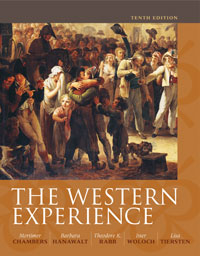1 A) 25%. B) 50%. C) 75%. D) 100%. E) 150%. 2 A) fewer battlefield mortalities. B) declining death rates due to improved medicine and hygiene. C) increasing birth rates due to increased economic opportunities. D) increasing birth rates due to a mild improvement in average climate. E) declining death rates due to better food supply. 3 A) Increasing competition for resources depressed the economy. B) Increasing demand for goods and services stimulated the economy. C) Increasing competition and increasing demand canceled each other, so there was little net effect. D) Europe's surplus population emigrated to the colonies, making up the bulk of the labor force in them. E) Increasing competition for scarce resources led to increasing incidents of warfare on the continent. 4 A) Rents rose while wages fell, benefiting landlords and businessmen and hurting farmers and laborers. B) Rents rose while wages fell, benefiting farmers and laborers and hurting landlords and businessmen. C) Rents fell while wages rose, benefiting landlords and businessmen and hurting farmers and laborers. D) Rents fell while wages rose, benefiting farmers and laborers and hurting landlords and businessmen. E) Rents fell and wages fell, hurting landlords, farmers, and laborers. 5 A) economically, it strengthened marketing networks, spurred capital accumulation, and stimulated demand. B) socially, it familiarized rural inhabitants with industrial processes and cash relationships. C) demographically, it loosened restraints on marriage and births, which led to immigration into the cities. D) technologically, it stimulated innovations that increased productivity that sustained continuous growth. E) the volume of rural manufacturing increased under the putting-out system, as more rural families devoted time to industrial work. 6 A) economic progress depended on the state's management of each individual's labor. B) divisions of labor do not naturally emerge, but must be imposed by government. C) laissez-faire economic theory made severe overestimations of an individual's capacity. D) guild regulations were the most effective means of encouraging productivity among individual enterprise. E) money itself did not constitute wealth, but was only its marker. 7 A) small markets due to transportation limitations. B) demand skewed to finely crafted luxury items. C) entrenched economic privileges such as guilds and monopolies. D) laissez-faire attitudes among government administrators.E) governments that maintained counter-productive policies in order to enrich themselves. 8 A) an excellent base of raw materials. B) a docile working population held firmly in place by seigneurialism. C) a uniform system of tariffs, laws, and standards. D) a relatively wealthy population and pool of potential entrepreneurs. E) access to overseas markets. 9 A) iron making. B) making cotton goods. C) ship building. D) distilling rum from colonial sugar. E) gun manufacturing. 10 A) leave more fields fallow during a growing season without sacrificing productivity. B) experiment with techniques to enhance the quality of the soil. C) give control of more fields to peasants for their own personal use. D) be more absentee in their management of their farmlands. E) oppose the enclosure system. 11 A) increasing the productivity of the land. B) destroying cooperative farming villages. C) driving many peasants into destitution. D) causing a massive rural depopulation. E) making agricultural production more efficient. 12 A) the continued existence of "feudal" relationships. B) the continued dominance of the system of serfdom similar to that of the Middle Ages. C) the vigor of its urban commercial classes. D) the absolutist nature of its governmental structures. E) the control of territory by the Church. 13 A) the West Indies. B) East Africa. C) North America. D) India. E) West Africa. 14 A) Europe. B) Africa. C) Portugal. D) North America. E) the West Indies. 15 A) the slave system worked well, since they were islands. B) they produced tropical crops difficult to grow elsewhere. C) they depended on exports from Europe and America. D) they could manufacture the luxury goods demanded by the planter class. E) all colonial powers in the region were making money. 16 A) the risks of slaving ventures were high. B) it condemned some captives to death and the rest to a life of forced labor. C) it created luxuries and generated huge profits for the Europeans. D) almost half a million people were removed from Africa annually and placed into the slave trade. E) it sparked agitation against slavery by Quaker reformers in Britain and France. 17 A) Britain's dominance at sea prevented France from reinforcing its colonies. B) Britain was able to stay out of the Seven Years' War, while France fought in it. C) Britain's ally Russia was able to beat France, Austria, and Prussia. D) the French economy was more dependent on overseas trade, and thus more vulnerable in a naval war. E) Britain had superior artillery that could not be matched by French fortifications. 18 A) eliminate the threat of French power in North America. B) reduce French holdings in the West Indies. C) establish British military supremacy in India. D) remove France as a naval power of consequence. E) essentially restore the status quo antebellum. 19 A) moving aggressively to establish an overwhelming presence. B) exploiting divisions among Indian potentates. C) creating a class of landholders beholden to Britain. D) indoctrinating select Indians in British culture. E) creating a private corporation, the London East India Company, to administer its political and commercial interests. 20 A) Robert Clive. B) Lord Cornwallis. C) William Pitt. D) Louis Montcalm. E) Edward Braddock.





